Instruction of Pitched Roof
Important Point
From the beginning of civilization, roofs are one of the essential structural components, necessary for building construction.
Roofs protect the building structure and the inhabitants from adverse atmospheric and exposure condition and also to enable privacy to its inhabitants.
The design and construction of a roof necessitate the consideration of several design factors among which, the element of drainage holds the most crucial role. Excellent Roof construction requires a careful review of all it’s dependent factors and the use of different roofing materials.
The design of drainage is widely dependent on the slope of the roof to be provided, based on which, the shelters are classified into two categories- Flat Roofs & Pitched or Sloping ceilings. These are the two types of roof structure.
Pitched Roof are the roofs which generally slopes downwards in one, two or more parts (depending upon the design), at a certain angle from the central ridge (the central ridge is the highest point or peak in a sloping roof).
In earlier times, pitched roofs are constructed using timber, but modern construction techniques allow it to be built using concrete, having timber as it’s formwork surface.
This types of roofs are widely it was adopted in places where extreme rain and snowfalls occur, due to the adequate drainage, it provides over other choices.
These types of roofs are visually appealing and have a great look, so it’s also a suitable choice for traditional and modern houses, where there are no financial implications.
The difference of the pitched roof from the flat roof is that the slope of the flat roof is less than 10°, which only enables adequate drainage of rainwater in low to moderate rainfall regions, whereas, in the sloping roof, it generally varies between 45°-60°.
Also, Read: Hip Roof Vs Gable Roof | What Is Gable Roof | What Is Hip Roof
What Is Pitched Roof?
A pitched roof is a roof that slopes downwards, typically in two parts at an angle from a central ridge, but sometimes in one part, from one edge to another.
The ‘pitch‘ of a roof is its vertical rise divided by its horizontal span and is a measure of its steepness.
Also Read: Names of Roof Tiles
Types of Pitched Roof
Depending upon the slope, environmental condition, aesthetic view, and number of sloping surfaces, the pitched roof are widely categorized into the following types
- Mono-Pitch Roof.
- Double-Pitch Roof.
- Couple Roof.
- Couple Close Roof.
- Collar Beam Roof.
- Slant Roof.
- Purlin Roof.
- King Post Roof.
1. Mono-Pitch Roof:
This is the simplest form of Pitched roof, where the number of the sloping surface is one, I.e. It is a single sloping roof surface often not attached to another roof surface.
This type of roof usually takes the look of an equilateral triangle where one is connected with the central ridge, and the other end, overhangs. It can be denoted by various names such as shed roof, lean-to roof, pent roof & skillion roof.
The slope of the mono-pitch roof is the ratio between its rise (considered from the lowest point of the ridge), and it’s span (considered the horizontal distance the roof covers).
Mono-pitch roofs are generally constructed using a set of principal ties, struts, principal rafters and angle purlins to enable the placing of roof coverings or sheets.
Advantages of Mono-Pitch Roof:
- Being the simplest form of a pitched roof, it requires nominal materials to construct this roof, which is why this type of roofs are widely used for garages, storage rooms and go downs.
- To construct this type of roofs, not much design are to be prepared, so this type of roofs can be very quickly erected and does not cost much.
- Having slope more than 45°, it provides adequate drainage of rainwater and snow falls, making it a suitable choice for heavy rainfall regions.
Also, Read : Difference Between One Way Slab and Two Way Slab | What is Slab
2. Double-Pitch Roof:
This is the most widely used pitched roof, where the number of a sloping surface is two, that is, there are two sloping surfaces in the opposite direction. In other words, it is the combination of two mono-pitch roofs.
The rise of double pitch roof is the same as that of the mono-pitch roof, and its horizontal span is twice the value of the mono-pitch roof.
The structure of double pitch roof is similar to that of a quadrilateral triangle. The material used for this type of roof structure is a single set of principal ties, two sets of principal rafters, struts, angle purlins used to place the roof coverings.
Advantages of Double-Pitch Roof
- This type of pitched roof is widely used nowadays for residential buildings. It provides a very economical solution to the roofing system, and are visually appealing.
- Having a slope in the range of 45° to 60°, it provides effective drainage for houses in heavy rainfall and snowfall regions.
- Design of this type of roofing system does not require much effort, which can be done in a very short time.
3. Couple Roof:
Being referred to as the simplest form of roofing system, it is similar to that of the Gable roof or Double pitch roof, the only difference is that couple roof can be constructed at meagre cost and can be erected very fast.
The materials used for the construction of a couple close roof essentially timber.
At first, the wall plates are fixed on both the supporting walls (which most of the case is Masonry Pillar) and a ridge piece is fixed at the central ridge. One end of the principal rafters are placed on the ridge piece, and the other end, on the wall plates.
Sheeting (which are generally A.C, G.I sheets or Mangalore tiles) are provided over the angle purlins, which are placed over the principal rafters.
Couple roof is usually suitable in places, where the maximum span is limited to 3.7 meters.
Advantages of Couple Roof
- Being the simplest form of the roof, it can be used in garages and storage house as well as a residential building having low span between the pillars.
- These roofs are very light and easy to construct.
- Having an adequate slope it provides an effective drainage solution for all types of a residential building.
Also, Read: One Way Slab and Two Way Slab Design Step by Step
4. Couple Close Roof:
This type of roof is very similar to that of the couple roof, the only difference is that in this type of roof, the legs of the common rafters are connected by a horizontal tie.
The tie provided in the roof runs from the wall plate of one pillar to the other wall plate; in other words, it covers the entire horizontal span of the top.
The tie beam prevents the common rafters from spreading and trusting out of the walls, as the tie beam is connected to the feet of the common rafter.
The horizontal ties are nailed to the rafters and also with the walls plates. Wood and steel (channel sections) are widely used material for the manufacture of horizontal relations.
Advantages of Couple Close Roof
- The most important benefit associated with this type of roof is that it provides additional triangular space as storage spaces to be used as a loft, which is most of the time missing in modern house design.
- This type of roof does not include intricate designs to be made; the designs are effortless and can be drawn out in a short time.
5. Collar Beam Roof:
Collar Beam Roof is very similar to that of the couple close roof, the only difference is that in a collar beam roof, a collar tie is provided, instead of a horizontal tie, which runs from one wall plates to the other.
A collar tie is a horizontal structural member between the rafters, which is raised from the feet of the rafters to almost the middle of it.
Collar ties should not be fixed by more than one-third or one-half of the rise of the roof, from the wall plate.
When the clear span of the roof increases, or when weighty loads are applied, the rafters show a tendency to bend. To prevent that, the collar ties are provided, which stops the sagging of the rafter under excessive loading conditions or in high spans.
This type of roof is used where the clear span is between 4.4-5 meters, having the ideal span of 4.8 meters.
Advantages of Collar Beam Roof
- It is structurally safe for long span roofs and prevents the sagging of elements.
- In this type of roof, the first-floor beam can be raised to near the roof, this utilizing the unutilized roof spaces.
Also Read: Requirements of Good DPC | Prevention of Dampness: Use of DPC | Methods of Damp proofing
6. Slant Roof:
A hip, or hipped, the roof is a gable roof that has sloped instead of vertical ends. The gambrel roof is a type of gable roof with two slopes on each side, the upper being less steep than the lower.
Advantages of Slant Roof
- Extra Space. A slant roof creates attic space that homeowners can use for storage or some other activity.
- Reduced Snow Buildup. A slant roof can also effectively manage snow.
- Better Water Flow. A slant roof has the ability to easily and quickly direct rain into your gutter system.
Disadvantages of Slanting Roof
Although not much, there are a few disadvantages of using the Slanting roof, which is mentioned as follows:
- The foundation of the roofs can be very stressed when this type of roofs are being used. Thus this type of roofs can only be used where the existing subsoil is strong to withstand the stress.
- Though having a visually appealing appearance, this type of roofs is very expensive, this making it unsuitable, where financial implications prevail.
7. Purlin Roof:
A purlin is a longitudinal, horizontal, structural member in a roof. In traditional timber framing, there are three basic types of purlin: purlin plate, principal purlin, and common purlin.
Purlins also appear in steel frame construction. Steel purlins may be painted or greased for protection from the environment.
Advantages of Purlin Roof
- The best part and the advantage of using purlins is that your roof coverings can be given different shapes and designs.
- With the use of purlins, it completely becomes your choice whether you want to give your roof a flat look, cone-shaped or pitched look then use purlin roof.
Also, Read: What Is Dampness | Requirements of an Ideal Material for Damp-Proofing | Materials Used for Damp-Proofing
8. King Post:
A king post is a central vertical supporting post used in architectural, bridge or aircraft design applications. A king post extends vertically from a crossbeam to the apex of a triangular truss.
The king post connects the apex of the truss with its base, holding up the tie beam at the base of the truss. Development of the king post structure terminates the central post before it reaches the apex of the roof truss.
Instead, the king post is held in place by a collar beam, a secondary beam parallel to the tie beam. In this structure, the central post is termed the crown post.
The king post truss is used for simple roof trusses and short-span bridges. It is the simplest form of truss in that it is constructed of the fewest number of truss members.
The truss consists of two rafters, one horizontal beam, serve as a ceiling joist.
Advantage of King Post
- King Post Walls are fast to construct. King Post Walls can be cheaper when compared to other retaining systems such as sheet piled and concreted piled walls.
- King Post Wall installation is versatile and adjustments can be made in the field easily to accommodate changes.
Sloping Roof:
A pitched roof is a roof that slopes downwards, typically in two parts at an angle from a central ridge, but sometimes in one part, from one edge to another. The ‘pitch’ of a roof is its vertical rise divided by its horizontal span and is a measure of its steepness. For more information, see Flat roof.
Pitched Roof
A pitched roof is a roof that slopes downwards, typically in two parts at an angle from a central ridge, but sometimes in one part, from one edge to another. The ‘pitch‘ of a roof is its vertical rise divided by its horizontal span and is a measure of its steepness.
What Is Best Pitch for a Roof?
Conventional slope roofs, with a pitch between 4/12 and 9/12, are the most common in residential work.
House Pitched Roof
A pitched roof is a roof that slopes downwards, typically in two parts at an angle from a central ridge, but sometimes in one part, from one edge to another.
Why Do Houses Have Pitched Roofs?
This type of roof is more commonly seen in residential homes, as the space directly underneath it is an attic. It’s easier for water to drain on a pitched roof compared to a structure that’s more flat. However, they’re also generally harder to maintain given their steep slopes.
What Is the Best Roof Pitch for a House?
Conventional slope roofs, with a pitch between 4/12 and 9/12, are the most common in residential work. Roofs with a pitch exceeding 9/12 (37 degrees) are termed steep slope roofs.
Standard Roof Pitch for House
For a typical roof pitch to use for a traditional house, you should start with the 4/12 pitch cited above, but anything falling in the range between 4/12 and 9/12 is pretty common. If your pitch is lower, you will see it sporting a slight angle, hence the term low-slope roofs for them.
What Is Pitched Roof?
Roof pitch is the steepness of a roof expressed as a ratio of inch rise per horizontal foot, or as the angle in degrees its surface deviates from the horizontal. A flat roof has a pitch of zero in either instance; all other roofs are pitched.
What Is My Roof Pitch?
Measure the vertical distance (up) from the level’s 12-inch mark to the roof. The number of vertical inches is the rise. The roof pitch is the rise divided by the run.
How to Find the Pitch of a Roof?
The angle, or pitch, of a roof is calculated by the number of inches it rises vertically for every 12 inches it extends horizontally. For example, a roof that rises 6 inches for every 12 inches of horizontal run has a 6-in-12 pitch.
Pitch Roof
A pitched roof, also known as a sloping roof, is a roof design that slopes downwards from a higher point to a lower point. It is one of the most common roof types used in residential and commercial construction, and is known for its durability and ability to shed water effectively.
Mono Pitch Roof
A mono-pitch roof, also known as a single-sloping roof, is a type of pitched roof that slopes in one direction only. It is a simple roof design that is commonly used for sheds, porches, and extensions to existing buildings.
Pitched Roof Design
Designing a pitched roof involves considering a range of factors such as the slope, size, shape, and materials used to create the roof.
Dual Pitched Roof
A dual-pitched roof, also known as a gable roof, is a type of pitched roof that has two sloping sides that meet at the ridge or peak of the roof. It is one of the most common roof types used in residential and commercial construction, and is known for its simplicity and versatility.
What Is a Pitched Roof?
Pitched roofs can be constructed from a variety of materials, including asphalt shingles, metal, tile, and slate. The type of material used can affect the durability, cost, and appearance of the roof. Additionally, pitched roofs can be insulated to improve energy efficiency and reduce heating and cooling costs.
Double Pitched Roof
A dual-pitched roof, also known as a gable roof, is a type of pitched roof that has two sloping sides that meet at the ridge or peak of the roof. It is a common roof design in residential and commercial construction.
Couple Roof
A couple-close roof is a type of traditional roof design that consists of a pair of timber roof rafters that are joined at the apex to form a triangular shape. These rafters are typically joined by a horizontal tie beam, which helps to provide additional support and stability to the roof structure.
Pitched Roofing
Pitched roofing is a type of roofing system that consists of a pitched or sloping roof design. This type of roofing is commonly used in residential and commercial construction and is known for its durability, versatility, and ability to shed water effectively.
Slope Roof
A slope roof is another term for a pitched roof, which is a roof design that slopes downwards from a higher point to a lower point. The slope of the roof is usually measured in terms of its pitch, which is the ratio of the vertical rise to the horizontal span.
Roof Apex
The roof apex, also known as the roof ridge or peak, is the highest point of a pitched or sloping roof where the two sides of the roof meet. It is the point where the roof angle changes from sloping downwards on each side to sloping upwards towards the center of the roof.
Like this post? Share it with your friends!
Suggested Read –
- Para Pit
- Nail Vs Screw | What Are Nail | What Is Screw
- Difference Between CPM and PERT | What Is CPM & PERT
- Top 10 Companies for Environmental Engineers to Work For
- Difference Between One Way Slab and Two Way Slab | What is Slab
- How is Concrete Made | What is Concrete | Components of Concrete | How to Mix Concrete
- What Is Roller Compacted Concrete | Advantages & Disadvantages Roller Compacted Concrete
Originally posted 2023-04-21 04:06:13.
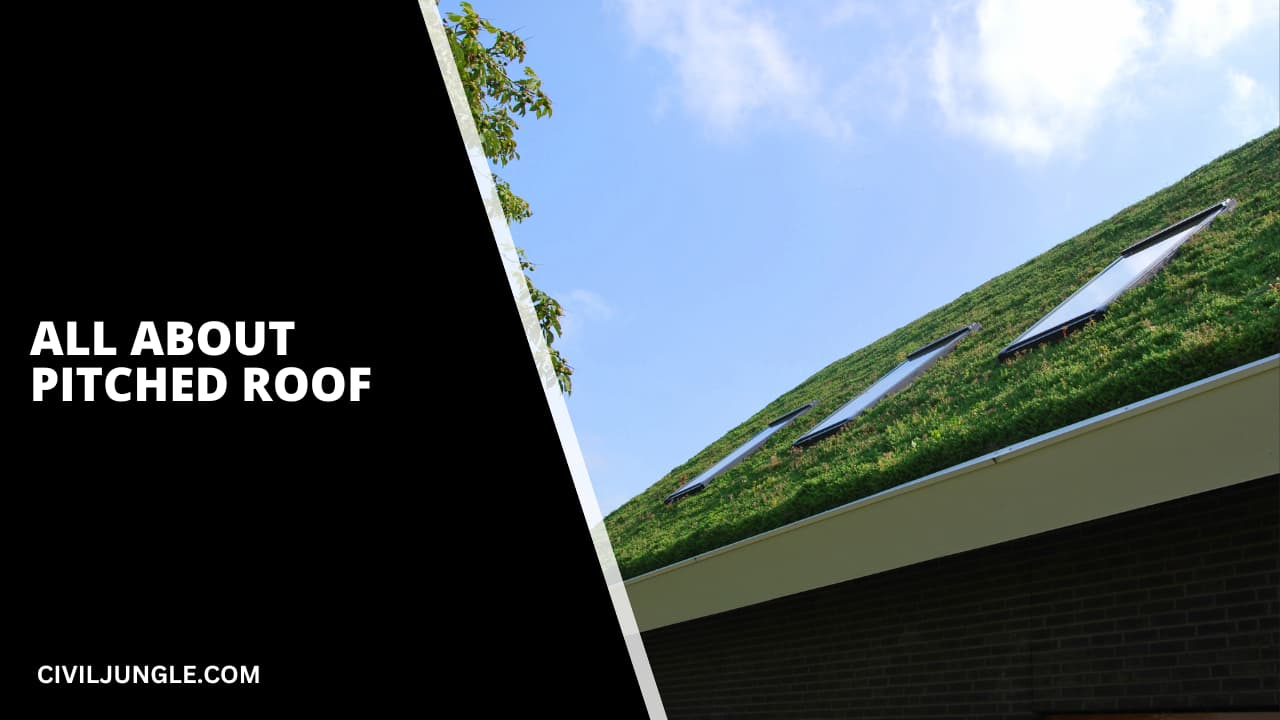

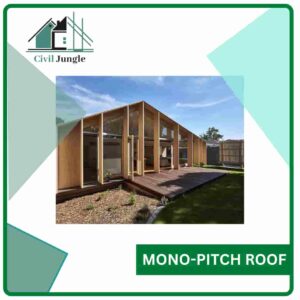
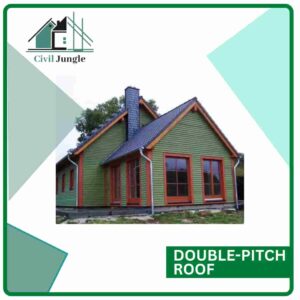

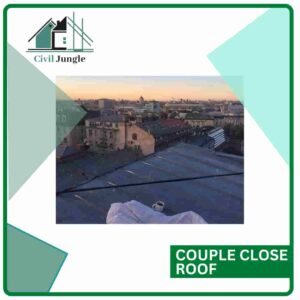
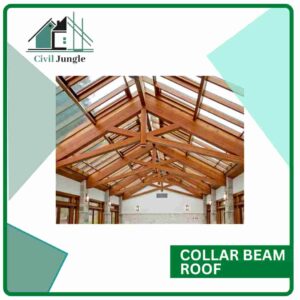
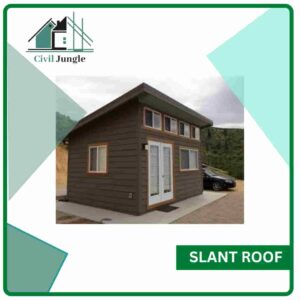
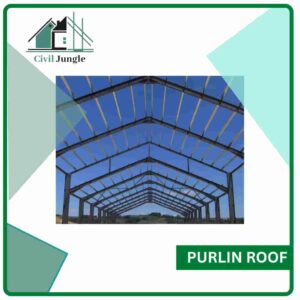
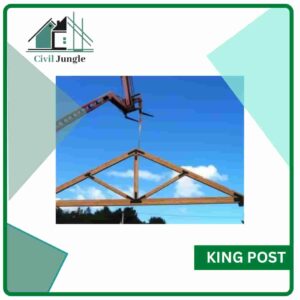

Leave a Reply